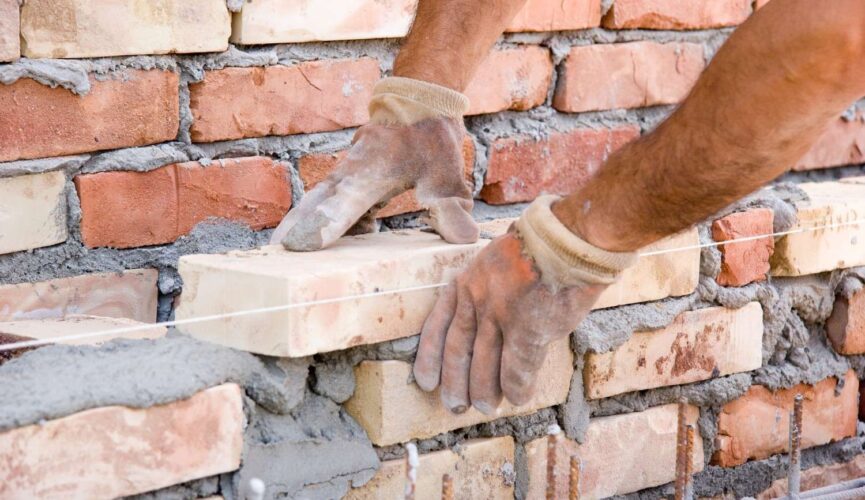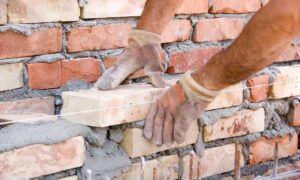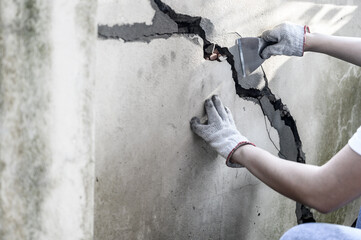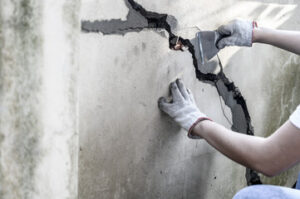Concrete Colorado Springs is a construction material that can be molded into almost any shape. Its main ingredients are cement, water, and aggregates (like sand and gravel). It can be used to build a wide range of structures.
Aggregates comprise the majority of a concrete mixture and usually comprise sand or natural gravel. Rocks and recycled materials are also sometimes used as coarse aggregates. When the components are mixed, a reaction known as hydration takes place which provides strength to the concrete.

Concrete has long been a key building material and its strength is a critical factor for most structural designs. Its ability to resist the compressive forces of heavy vehicles is especially important. A weak concrete structure can become an accident hazard for pedestrians or, at worst, fail completely. This is why it’s important to consider the concrete PSI rating of a construction project before it’s begun. Concrete with a higher psi rating is more likely to withstand the loads of larger vehicles.
Concrete’s strength is determined by testing the concrete cylinders, or cubes, under compression. This method varies by mix design, size, and the age of the specimens when they are tested. The 28-day compressive strength of cylinders is the most commonly used value in structural concrete specifications and design codes. However, other properties of concrete are also specified, such as abrasion resistance or durability in harsh climates.
Another property of concrete that is important is its flexural strength. This is a measure of how much the concrete can bend before it fails. This is usually tested using a concrete beam. It is typically loaded in a way that places a concentrated load on the center or third point of the beam. The results are then compared to the compressive strength of the concrete.
To increase the strength of concrete, it’s important to use a high-quality aggregate and water. In addition, the concrete must be properly poured, compacted, and cured to achieve optimal strength. The curing process enables the cement to hydrate, and calcium silicate hydrate is formed, which adds to the concrete’s strength. The concrete must be kept moist during the curing process to ensure that the hydration takes place properly.
To improve the workability of concrete, it can be added with a number of different admixtures, including water reducers and superplasticizers. These admixtures make the mixture soupy for a short time, enabling it to be placed more easily. They also help to control the slump and provide a better flow. In addition, they are helpful in reducing the amount of water that is required to achieve the desired mix consistency. These admixtures can help save money and reduce environmental impact.
Concrete is a durable material that is used in construction for its strength, longevity and versatility. It can withstand weathering actions, abrasion and chemical attacks. It can also be reinforced with steel rods to improve its durability. However, it is important to know that concrete can deteriorate over time if it is exposed to the wrong conditions. Deterioration of concrete structures usually occurs due to the penetration and transport of harmful chemicals within the porous structure. These chemicals can cause various types of deterioration, including corrosion and spalling.
Durability of concrete is a complex phenomenon, and different environments require varying degrees of durability. Durability can be affected by factors such as mix design, water and cement hydration, aggregate reactivity, temperature, and curing. Concrete with a lower porosity and permeability is more resistant to deterioration. This is achieved by lowering the water-cement ratio and using finer aggregates.
Another way to enhance concrete durability is by adding a crystalline admixture, which is a chemical that forms needle-shaped crystals in the presence of water and un-hydrated cement particles. This reaction fills capillary pores and micro-cracks in the concrete to block pathways for water and waterborne contaminants. Concrete with this admixture is also self-sealing and requires less maintenance than concrete without it.
It is also possible to make concrete more durable by incorporating fibers into the mixture. These fibers may be made from a variety of materials, such as steel, polymer, glass, carbon or coconut fiber. These fibers can increase resilience, tensile strength and flexibility. They can also reduce cracking and abrasion.
During the design phase, concrete durability is determined by the structural calculations, details and materials. It is also determined during the construction process by the quality of the concrete, curing process and preventive measures. Preventative measures include the use of proper construction techniques and materials, and regular inspections and monitoring.
Concrete must be kept moist during curing to ensure adequate hydration and strength. This moisture is necessary for the hydration of calcium silicate hydrate (C-S-H), which accounts for over 90% of the final concrete strength. During the curing period, the alkali-silica reaction also takes place between the high alkali content in the concrete and the low silica content of the aggregates. This reaction can cause pop-outs, alkali-aggregate reactivity and permeability problems in concrete.
Concrete is a ubiquitous material in modern society, making up everything from pavements and sidewalks to bridges and dams. It is one of the most important and longest-lasting construction materials used in the world. It can be poured, pumped, sprayed and grouted to create structures that are strong, durable and versatile. It is also highly reusable and can be recycled to make new concrete.
Concrete is made from a mixture of filler and binder. The filler consists of fine and coarse aggregates, while the binder is composed of cement and water. The concrete can be manufactured at a plant or on-site using various methods and equipment, from hand tools to large industrial machinery. The key to concrete’s flexibility lies in its porosity and permeability. Porosity refers to the volume of pore space in the material, while permeability refers to how easily water or other liquids can pass through the concrete.
In addition to traditional raw materials, many industrial wastes can be used to produce concrete. For example, fly ash (also known as GGBFS or ground granulated blast furnace slag) can be used to replace some of the cement and aggregates in concrete. These recycled materials not only reduce the environmental impact of concrete production but also enhance its properties, such as tensile strength and resilience.
There are many different types of concrete, each with a different application and design. For example, lightweight concrete uses smaller, more porous aggregates and can be poured in thinner layers. This type of concrete is often used in buildings and pavements where a high level of tensile strength is not required.
Other industrial wastes can also be used to create lightweight concrete, such as glass and vehicle tires. In addition, chemical admixtures can be added to the mix to modify its properties, such as fluidity or set time.
ML has been used to model the behavior of concrete on a variety of scales, from molecular to macroscale. However, modeling at these scales is challenging due to the complexity and variability of real-world conditions. For example, the quality of raw materials may vary at different sites depending on local weather; mixing, transporting, placing, and curing conditions can all influence the behavior of concrete.
Concrete is the construction material of choice for a large number of residential and commercial buildings. It is used to build the skeleton of the building, from foundations and slabs to columns and beams. It is also safer than other types of building materials and needs less maintenance. Moreover, it has excellent heat and water resistance properties.
The cost of concrete varies, depending on the type and strength needed for a project. Some of the factors that influence the cost include the concrete mix type, the amount of cement used, the size and location of the concrete slab, and any other costs associated with the installation process. The best way to determine the cost of a concrete slab is to contact a local contractor and discuss the project requirements.
A cubic yard of concrete typically costs $117 to $147 per delivery. This price includes delivery and installation. Homeowners should also consider other project costs, such as site preparation and concrete removal. These additional costs can add up to a significant sum.
Aggregates are granular materials crucial to the concrete mixture. They offer a surface for the paste to stick to and account for 60 to 75% of the mix. They can be coarse, such as gravel or crushed rock, or fine, such as sand. The choice of aggregate depends on the final product desired, including durability and skid resistance.
Unlike wood and steel, concrete is inert and not susceptible to corrosion. It can also be molded into various shapes and sizes, which makes it ideal for construction projects. In addition, it is easy to transport and install. Concrete is also environmentally friendly, as it does not pollute the environment and is recyclable.
Although the use of concrete began benignly as a means of social development, it eventually morphed into a tool for political expediency and individual greed. The craze for concrete transformed the country into a “doken kokka” state, where government officials, party leaders and contractors all benefitted from a nexus that bound them together: politicians needed campaign donations and kickbacks from construction firms to get elected; bureaucrats needed new projects to keep their jobs; and construction bosses wanted more contracts to stay busy and keep their profits high.



 Masonry is extremely durable, but like any other structure, it can experience wear and tear over time.
Masonry is extremely durable, but like any other structure, it can experience wear and tear over time.
